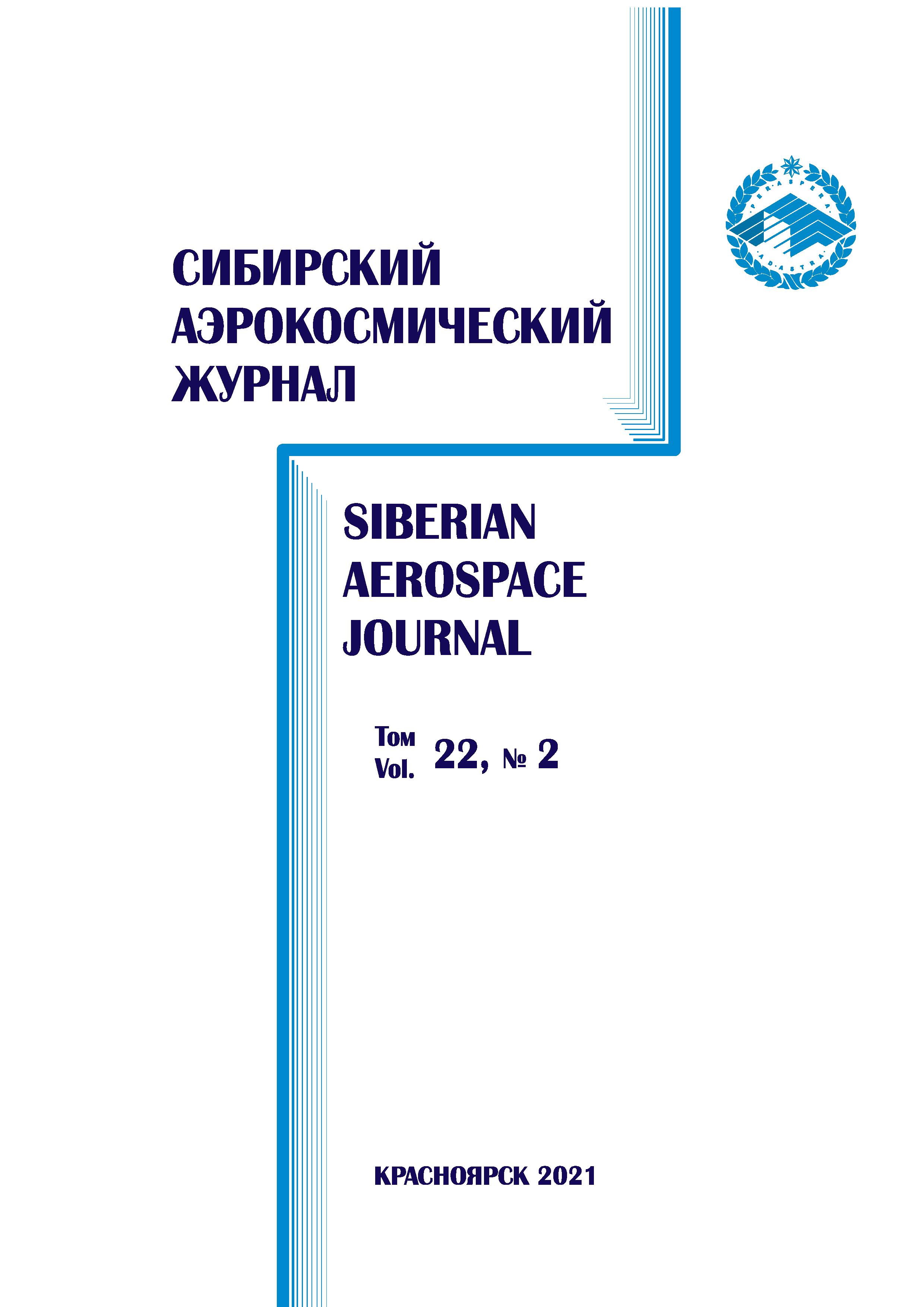Anomalies in IGS ephemeris and clock products and their impact on the solution of navigation problems
- 作者: Pustoshilov A.S.1, Ushakov Y.Y.1, Tsarev S.P.1, Ovchinnikova E.V.2
-
隶属关系:
- Siberian Federal University
- Reshetnev Siberian State University of Science and Technology
- 期: 卷 22, 编号 2 (2021)
- 页面: 288-300
- 栏目: Section 1. Computer Science, Computer Engineering and Management
- ##submission.datePublished##: 23.06.2021
- URL: https://journals.eco-vector.com/2712-8970/article/view/562877
- DOI: https://doi.org/10.31772/2712-8970-2021-22-2-288-300
- ID: 562877
如何引用文章
详细
The subject of this work is anomalies in the final products of the International GNSS Service (IGS), namely in the orbits and clock shifts of navigation satellites. The aim of the study was to determine the effect of such anomalies on the accuracy of precise point positioning (PPP) problems. As a method for detecting and distinguishing anomalies in the orbits of navigation satellites, the method proposed earlier by the authors (approximation by polynomials of high degrees) is used. For PPP problems we used the solution methodology recommended by IGS. The proposed method for detection of anomalies in orbits is applied to the analysis of anomalies in the orbits of GPS navigation satellites. Examples of anomalies that can be detected using the proposed method are demonstrated. A brief statistical analysis and comparison of the frequencies of anomalies in the orbits of GPS navigation satellites from 2010 to 2018, published by various IGS analytical centers, are presented. It is shown that orbital anomalies at the boundaries of daily intervals are, as a rule, correlated with anomalies in clock shifts and have a partially mutually compensating effect on the solution of navigation problems. Experiments have shown that for PPP problems, anomalies significantly increase the standard deviation of the pseudorange residues of the solution. Two options for mitigating the problem with anomalous orbits are considered: exclusion of satellites with anomalies at the boundaries of daily intervals from the solution process and “correction” of the anomaly in the orbit. The most natural method of orbit correction (an orbit change to remove large anomalies at the day boundaries) of the published final orbits has been tested. From the point of view of PPP problems the most effective way to mitigate the exposed problems at the day boundaries turned out to be the exclusion of satellites with anomalies in the orbit, since attempts to “correct” the orbits more often led to an increase in the RMS deviation of pseudo-ranges, which is associated with correlated anomalies in the clocks of the navigation satellite. According to the results of the study, we can conclude: before solving the PPP problems, it is necessary to investigate the orbits and clocks of the navigation satellites for the presence of anomalies by the proposed methods and, if possible, exclude such satellites from the input data before solving the PPP problem. The proposed methods for detection of anomalies in the published orbits and clocks of navigation satellites, in addition to obvious applications to PPP problems, are also applicable to monitoring the quality of functioning of the space and ground segments of GLONASS and GPS systems.
关键词
作者简介
Alexander Pustoshilov
Siberian Federal University
编辑信件的主要联系方式.
Email: alphasoft@inbox.ru
senior lecturer
俄罗斯联邦, 79, Svobodny Av., Krasnoyarsk, 660041Yuriy Ushakov
Siberian Federal University
Email: yuron@akadem.ru
Cand. Sc., associate professor, School of Space and Information Technologies
俄罗斯联邦, 79, Svobodny Av., Krasnoyarsk, 660041Sergey Tsarev
Siberian Federal University
Email: sptsarev@mail.ru
D. Sc., professor of the School of Space and Information Technologies
俄罗斯联邦, 79, Svobodny Av., Krasnoyarsk, 660041Elena Ovchinnikova
Reshetnev Siberian State University of Science and Technology
Email: ovchinnikova_ev@sibsau.ru
Cand. Sc., associate professor
俄罗斯联邦, 31, Krasnoyarskii rabochii prospekt, Krasnoyarsk, 660037参考
- IGS Products. Available at: http://www.igs.org/products (accessed 10.01.2021).
- GLONASS information and analysis center for positioning, navigation and timing. Available at: https://www.glonass-iac.ru/ (accessed 10.01.2021).
- Center for Orbit Determination in Europe (CODE). Available at: http://www.aiub.unibe.ch/ research/code analysis_center/index_eng.html (accessed: 10.01.2021).
- The European Space Agency (ESA). Available at: https://www.esa.int (accessed: 10.01.2021).
- SP3-c format description. Available at: ftp://igs.org/pub/data/format/sp3c.txt (accessed: 10.01.2021).
- CLK format description. Available at: ftp://igs.org/pub/data/format/rinex_clock304.txt (accessed: 10.01.2021).
- Pustoshilov A. S. [Method for detection of small anomalies in final orbits of GLONASS navigation satellites]. Uspehi sovremennoy radioyelektroniki. 2019, No. 12, P. 142–147. Available at: http://www.radiotec.ru/article/24375#english (accessed: 10.01.2021)
- Tsarev S. P., Kytmanov A. A. Discrete orthogonal polynomials as a tool for detection of small anomalies of time series: a case study of GPS final orbits. arXiv preprint arXiv:2004.00414. 2020. Available at: https://arxiv.org/abs/2004.00414 (accessed: 10.01.2021).
- High degree least squares polynomial fitting using discrete orthogonal polynomials. Available at: https://github.com/sptsarev/high-deg-polynomial-fitting (accessed: 01.09.2020).
- Griffiths J., Ray J. R. On the precision and accuracy of IGS orbits. Journal of Geodesy. 2009, Vol. 83, No. 3-4, P. 277–287.
- Ray J. Precision, accuracy, and consistency of GNSS products. Encyclopedia of geodesy.
- Springer, Cham. 2016, P. 1–5.
- Interface Control Document ICD-GPS-240. Available at: https://navcen.uscg.gov/pdf/gps/ ICD_GPS_240C.pdf (accessed: 10.01.2021).
- Kouba J., Héroux P. Precise point positioning using IGS orbit and clock products. GPS solutions. 2001, Vol. 5, No. 2, P. 12–28.
- Kouba J. A Guide to Using International GNSS Service (IGS) products. Available at: https://kb.igs. org/hc/en-us/article_attachments/203088448/UsingIGSProductsVer21_cor.pdf (accessed: 19.01.2021).
- Pent G., Luzum B. IERS conventions 2010. IERS Technical Note. 2010, No. 36.
补充文件









